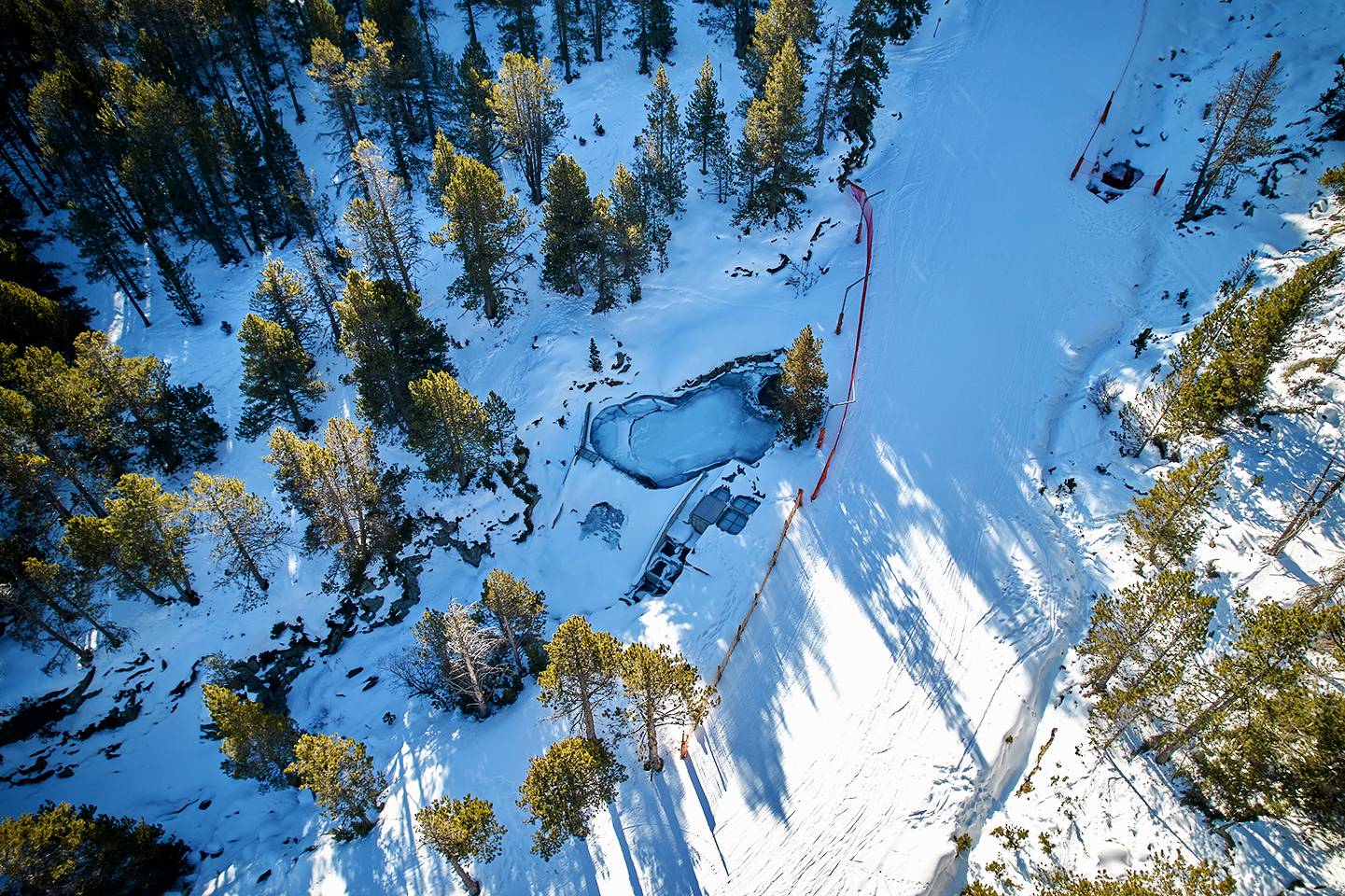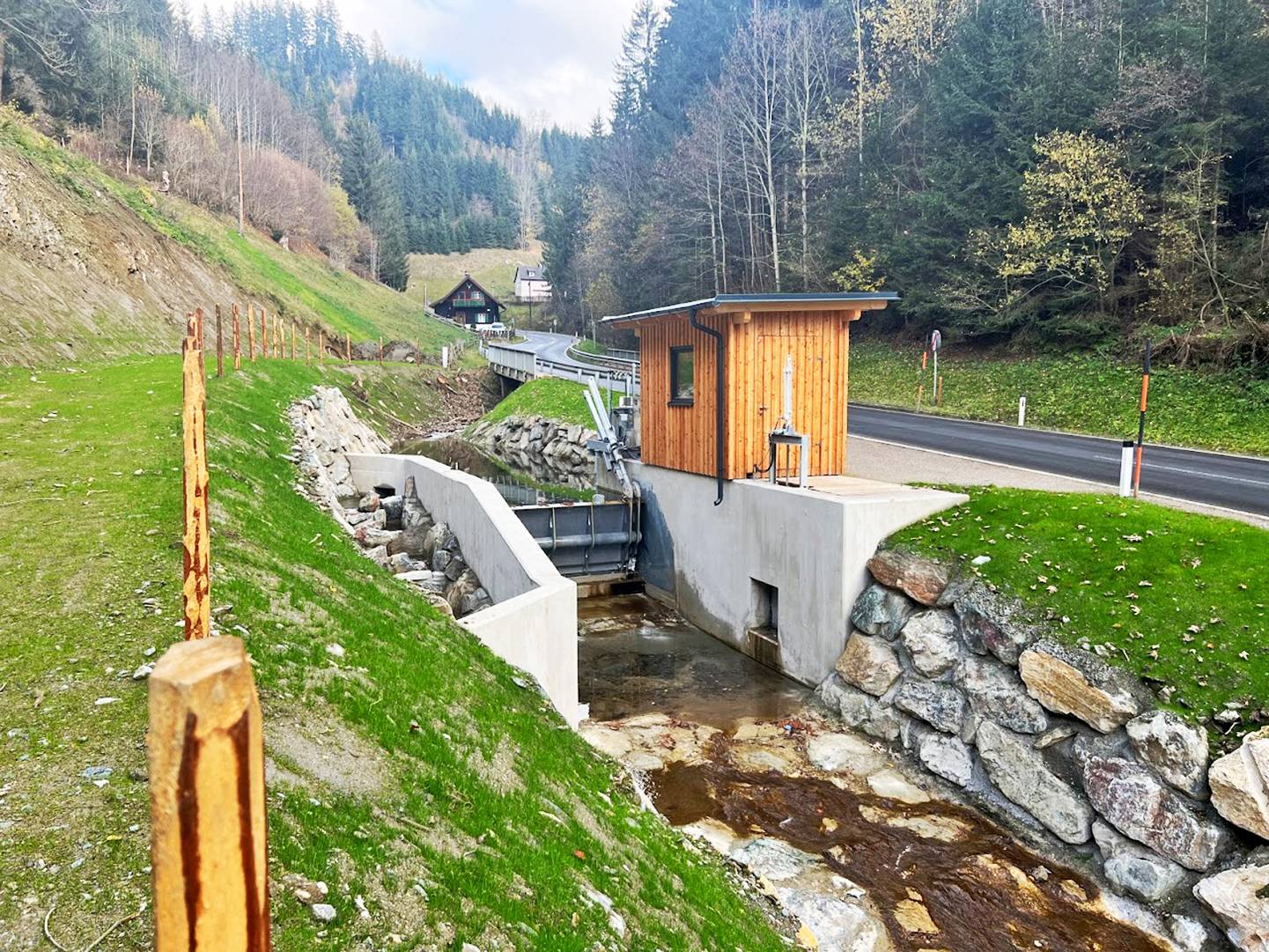Hydroelectric power technology from Lower Austria proves effective in Central Albania9 min read
Lesedauer: 6 MinutenBetween 2014 and 2016, the new hydroelectric power plant Rapuni 3 & 4 was built in the Central Albanian province of Elbasan with significant effort.
The project was undertaken by the Orthodox Autocephalous Church of Albania to strengthen its economic independence. The power plant is the lowest level and also the newest component of a cascade plant, which consists of three power plants on the Rapuni river. As for the two upstream plants, Kössler, the hydroelectric power specialist from Lower Austria, also supplied the equipment for the Rapuni 3 & 4 hydro power station. The three horizontal Francis turbines of Austrian origin are designed for to generate an output of 9.9 MW and will achieve an annual output capacity of roughly 44 GWh. On August 2, 2016, the new plant was formally inaugurated in the presence of the highest-ranking dignitaries of the Orthodox Autocephalous Church of Albania.
Archbishop Anastasios’ tireless pursuit of peace and social projects have made him known far beyond the Balkans. The archbishop of Tirana, Durrës, and All Albania – which is his official title – is also known for having an affinity for science, and also being aware of the significance of the church as an economic factor. In an interview with the World Council of Churches, the almost 90-year-old noted recently: “Our construction plans have made the church an important factor in the economic development of Albania. We are among the most serious investors in Albania and also create jobs.” Aware of this responsibility, the archbishop was also a driving force behind the hydroelectric power station project Rapuni 3 & 4, which was implemented by the Orthodox Autocephalous Church of Albania in close collaboration with the local government of the Elbasan region and in accordance with the Albanian energy strategy. Of course, the dignitary did not miss the inauguration ceremony of August 2, 2016. In his ceremonious speech, he noted: “This power plant is the result of our vision of more economic independence, in order to be able to continue our good social work.”
An elaborate construction project
Indeed, the Rapuni 3 & 4 station is one of Albania’s most expansive small-scale hydroelectric power projects. Roughly 412,000 m3 soil were moved, whereas nearly 62,000 m3 and 6,600 tons of steel were used for construction. The water capacity and penstock are particularly extraordinary for a small-scale hydroelectric station: A 10 m high dam was erected, creating a reservoir with a capacity of roughly 60,000 m3. Furthermore, a roughly 5 m wide and 2.3 km long tunnel was dug from the rock to channel water from the Qarrishtë river. Thus, the power plant is fed by water from the Rapuni river on the one hand, downstream water from the upstream plant Rapuni 2, and another water catchment facility on the Qarrishtë river. The transverse structure at the Diversion Dam consists of a total of four radial weirs of 12 m each. It is connected to an embankment dam of roughly 177 m. One of the four radial weirs has a hinged gate that regulates water extraction in a fully automated manner. For the plant’s operation, a total of 27 m3/s can be extracted from both bodies of water.
This feed water is channelled to the surge tank through a 3.6 km long concrete tunnel, of which 2.3 m are solid rock. The surge tank is connected to the 86 m long pressure pipeline made of steel, which has a diameter of DN 2,800, through which the feed water is channelled to the power house. In order to control the transient conditions and the risks connected to such a long pressure pipeline, the responsible authorities decided to build a surge tank – which is also a very unusual component of a small-scale power plant. How-ever: the extraordinary effort reflects the plant’s significance for its operators and the region.
Calculations as proof of competency
From the earliest stages on, calculations regarding the pressure shock and surge tank were considered to be of highest importance. They were also a strong deciding factor that made the planners trust in the competence of the Austrian hydroelectric power specialist Kössler. “The primary criteria of the project included the rather complex pipeline system and the resulting threshold values regarding the pressure shock under consideration of the surge tank. In this regard, Kössler made extensive calculations and simulations using the SIMSEN system, in order to determine the actual pressure conditions across the entire pipeline system. The load dump analyses conducted upon commissioning all remained within the previously simulated range, the maximum pressure shock values were lower than anticipated,” says Kössler’s Head of Sales, Dipl. -Ing (FH) Alexander Melchus, M.Sc. and adds: “Kössler also contributed significantly to the calculations regarding the surge tank. All fluctuations during load dump were also previously simulated and the system had been adjusted accordingly. These calculations provided an important advantage for the project, as we were able to offer the client extensive security in the implementation.”
A flow-optimized design
Another point in which Kössler was able to incorporate their know-how was in the design of the distribution pipeline. Outside of the power house, the water flow is distributed to the turbines via three channels. In order to achieve a distribution of the water with the best-possible loss reduction, the Kössler engineers designed a flow-optimized design for the distribution pipeline – based on finite-element analysis (FE method). With this numeric procedure, computer simulations and analyses of the strength and warping conditions of bodies with complex shapes are created. The result was a distribution pipeline design that guarantees optimal intake and weighs a grand total of 100 tons. According to Head of Sales Alexander Melchus, the Kössler engineers can also draw on the extensive opportunities within the Voith corporate group, if special calculations are eneeded. A true advantage.
Another factor that spoke for the industry experts from Lower Austria, was the fact that the two upstream plants Rapuni 1 and Rapuni 2, which are operated by a different investor and also contain machinery by Kössler. Since 2011, the Francis turbines have been successfully in use here. The positive experience also played a role in the machine selection on the part of the persons responsible. Also: the name Rapuni 3 & 4 does not mean – as could be assumed – that it is a two-level plant. The name remained in place after the combination of two separate concessions. Rather, this is a single-level diversion power plant with a power house, with three machine units.
An efficient machine trio
The machine trio, which will provide clean power to the grid for many years, was selected in alignment with the high quality standards of the plant as a whole. In particular, horizontal Francis turbines by Kössler were selected, which are coupled with a synchronous Koncar generator via a rotating shaft. Each of the turbines has an runner diameter of 1.21 m power and one reliable synchronous generator with a nominal speed of 429 rpm. The machines are designed for a flow rate of 9 m3/s and for a net net head of approx. 41.5 m during single-machine operation. Each of the Francis turbines, which are constructed similarly, achieve ratings of approx. 3.4 MW. The bottleneck output in case of a full load and with all three machines working at full capacity is roughly 9.4 MW. In total, the three modern machine units will produce 44 GWh power per normal year and feed into the public 110 kV power grid of Albania.
A comprehensive hydropower package
Kössler was involved in the initial planning and conceptual designs for Rapuni 3 & 4 as early as late 2013. For good reason: The contract on the installation of the power plant was signed in the summer of the following year. In addition to turbines and generators, as well as the design of the distribution pipeline, Kössler’s entire scope of delivery also included three shut-off valves DN 1,800, hydraulic control units for the individual machine units, as well as the so-called E-BoP. This is an umbrella term for generator protection, automation & operation, the SCADA system, support equipment and level measurement probes, to name some of the most important components.
Both the delivery as well as the installation were effortless and completed in a timely manner. “Access to the powerhouse in Librazhd was excellent. Although the entire construction project was complex and quite elaborate, installation worked well and the collaboration of the individual companies went particularly smoothly. The Greek construction firm Aktor S.A. did a very good job and realized all parts of the contract work in high-quality construction,” says Alexander Melchus. The dry and wet tests and subsequent final commissioning were completed immaculately. “The only drawback was the low water supply at the time of commissioning, which required hours of damming before the various test could be conducted,” says the Head of Sales at Kössler. In October 2015, the powerhouse was handed over to the owner and operator.
Strengthened social projects
On August 2, 2016, the big day had come for the new power plant Rapuni 3 & 4, which was handed off in an inauguration ceremony. The leading representatives of the Orthodox Autocephalous church of Albania, led by Archbishop Anastasios, were present and unanimously exited about the successful implementation of the power plant project. “This investment will contribute to strengthening the economic independence of the Orthodox Autocephalous church of Albania. It will strengthen the funds from which educational initiatives and social work have been financed in the past. In addition, the revenue will contribute to future projects that support children and youth, as well as those in need,” reads an official statement on the church website. In addition, the responsible parties highlighted in the context of the inauguration that the plant will reinforce the region’s reliability of supply and that important economic impulses were created. With respect to combating climate change, the plant will save roughly 37,000 tons of harmful carbon dioxide.
However, not only the operators from the clergy consider the project to be an all-round success. The contractor, hydroelectric power specialist Kössler from St. Georgen in Lower Austria, also assigns special value to the project. Alexander Melchus notes in this context: “Rapuni 3 & 4 has proven to be an outstanding reference, since Albania’s rather small hydroelectric power sector is well connected and the operators know each other and exchange information accordingly. We were able to secure additional new projects since completing this project. Many of our new clients visited Rapuni 3 & 4 previously and were impressed by the quality and design. This was also reflected in new contracts – we are able to observe a positive trend in Albania.”
Share:


